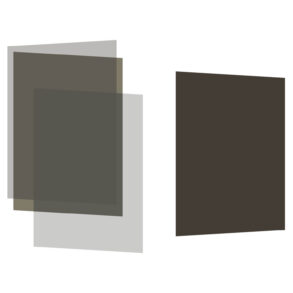The challenge of teaching children about a real life of the good, beautiful, and true and its relationship with Rudolf Steiner’s depiction of freeing the etheric heart.
Children can fascinate us with their light-heartedness, their energy, and their inherent ease in living playfully. When everything is going well, children proceed on the assumption that their environment is well-disposed towards them and that they are safe and secure in it. But now, more and more, young people lack a fundamental trust, a confidence in the future, vitality, and light-heartedness. Karin Michael, a member of the leadership of the Goetheanum’s Medical Section, attributes this to the increasing sensitivity of many children, who are being exposed to more and more stimuli that are difficult for them to process. From her work as a kindergarten and school doctor, she reports: “We can observe that there are more and more children who are very alert and show symptoms of high sensitivity. Also, autism spectrum disorders are now an issue in every school classroom.” The physical effects of such heightened sensitivity are often seen in allergic diseases such as neurodermatitis, bronchial asthma, or food intolerances, as well as in a growing number of autoimmune diseases in childhood. On a psychological level, children and adolescents show signs of insecurity in the form of anxiety and withdrawal tendencies (often into virtual worlds) with isolation and depression, which can also lead to identity crises.
Laura Piffaretti, a music therapist and representative of the International Coordination of Anthroposophic Art Therapies (ICAAT) with specialties in painting and design, music and singing, speech and drama, also observes in her work that young people, in particular, appear to be increasingly overly sensitive to the world in which we live. She sees it as the task of art therapy to lay the foundation stone, in the first three seven-year periods of life, for the ability to perceive the world as true, beautiful, and good. “This is what the world needs,” says Piffaretti, “but, more and more, children and young people are coming to us for therapy and are unable to experience this in the same way. They ask: ‘Does that world even exist? And how do I get there?’” Art therapy can create a space wherein this experience becomes possible: “In self-expression, I am always in the here and now. The experience is immediate. And what is immediate is also true. So, we try to bring these three qualities [the true, the beautiful, and the good] into a processual experience.”
Where is the Heart?
But why is it that young people today are less and less likely to have a carefree experience of a benevolent world wherein they can naturally find a place for themselves? “What we try to convey in art therapy is something that I can only grasp with my heart,” says Laura Piffaretti. According to Rudolf Steiner, the heart, as a symbol of everything rhythmic in our body, is undergoing a development over the course of time that might serve as an explanatory model for the observed phenomena: the etheric heart is in the process of gradually detaching itself from the physical heart. (According to Steiner, this will continue until around the year 2100).
Steiner described the course and consequences of this process on April 5, 1919:
On the whole, the human being is a physical body embedded in an etheric body; the other [bodies], we need not consider today. But, the closeness of the connection—I do not mean the spatial correspondence, but rather what is dynamic in the connection—that changes in the course of the Earth’s evolution. The closeness of the relationship between the human etheric head and physical head that existed, for example, in the centuries which we refer to as the Greek cultural epoch, these relations no longer existed after the 3rd century before Christ. Since the 3rd century before Christ, the old intimate connection between the human etheric head and the physical head has been lost. However, a very close connection between the human physical heart and etheric heart was always maintained. But, since the year 1721, oddly enough, the connection between the human physical heart and the etheric heart is more noticeably loosening . . . . [S]o, they used to be more of a whole, and now the etheric heart can become agitated etherically, it is no longer as dynamically, inwardly connected as it used to be.1
With reference to the Christianity of his times, Steiner explains that a materialistically oriented faith that does not ask questions is “extraordinarily dangerous, especially due to the separation of the etheric heart from the physical heart,” because the connection to the spiritual world is neglected. This makes it necessary for human beings “to seek something that used to come to them naturally—through the naturally occurring connection between the physical heart and the etheric heart—by a different path, by the path of spiritual life.”
On the one hand, it can be concluded that human beings today are in search of a harmonious relationship with the spiritual world and need a living rhythm and inner balance to maintain their strength and health. On the other hand, life and environmental conditions are often downright chaotic, creating great challenges even to adults, and are increasingly reflected in human beings on an etheric level in the form of exhaustion and burnout. According to Karin Michael, what may have once only been a materialistically oriented Christian belief can now be observed in the widespread beliefs supporting an expanding virtual world and transhumanism, as well as a now universally accepted materialism.
Replacing the Protective Cover
In this context, Karin Michael mentions the ever-increasing virtuality of our living spaces—more noise and artificial light, which have been proven to be stress factors responsible for the fact that puberty is occurring earlier and earlier in young people. The rhythmic basis of all our organ functions and life forces is respected less and less and is increasingly disturbed by external influences, for example, by a workload that often extends into our private lives, as well as irregular eating and sleeping routines. This is why, says Karin Michael, children, especially, need a balancing support: “Children’s vitality needs to be strengthened, but they also need a covering, a sheath, protection. This includes protection from sensory overload, for example, in the form of parental supervision or limiting media consumption. But not only that—undivided attention is also essential, something that is increasingly rare for children in our digitalized world.
And, last but not least, children need adults to set a healthy rhythm as an example for them and for this rhythm to be reinforced through regular rituals.” Touch, in the form of rubbing with a fragrant oil, before going to sleep, can strengthen the sheath of sensitive children and help them to calmly fall asleep, even if the child has absorbed “the worries of the whole world” during the day. The pediatrician also recommends that children should let off steam and spend a lot of time outside. “Running, climbing, building, or carving in nature are good experiences of self-efficacy, opportunities for sensory experiences, and help to train self-regulation,” says Karin Michael. In order to feel safe and secure in the world, we require a mindfully shaped, comfortable environment and healthy human relationships as a foundation, and, therefore, so do our children.
According to Laura Piffaretti, anthroposophical art therapies are also a way of dealing with this particular sensitivity: “It’s all about the fact that these young people can still continue with their lives, despite [their hypersensitivity]. And we want to work with them to find out what it takes to manage this sensitivity appropriately and to use it in a positive way.” Specially sensitive or highly sensitive children have a permeability that often enables them to have a very fine social sense, says Karin Michael: “They can use their sensitive antennae in such a way that they develop particularly sustainable social relationships and genuine salutogenic strength”—as long as we provide them, as well as ourselves, with an appropriate environment for this.
Events
The relationship between the awakening etheric heart and the development of young people in the first three seven-year periods of life was the subject of International Study Days for Anthroposophic Arts Therapies at the Goetheanum in January 2024. Study Days for 2025 and 2026 will continue on to the other seven-year periods of the human biography.
Live online events by art therapists are also planned under the title “The Heart Awakens” [Das Herz wacht auf] on April 27 and May 25, 2024.
The theme of this year’s International Congress on Pregnancy, Birth, and Early Childhood from May 29 to June 1, 2024, at the Goetheanum will be Life Forces: Finding Forces that Bring Life in a World of Exhaustion.
Further programs of the Goetheanum’s Medical Section can be found on the events calendar here.
Translation Joshua Kelberman
Photo Anna Hecker









